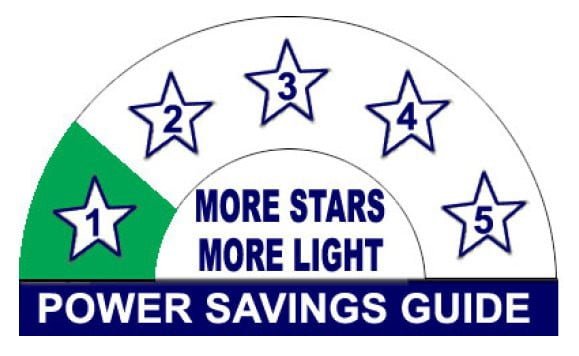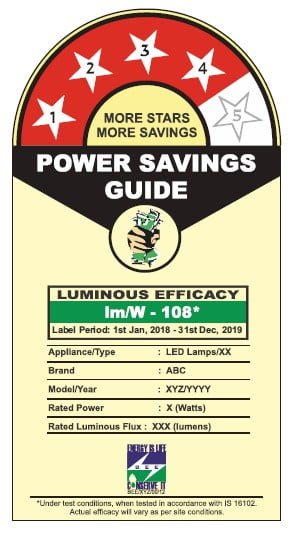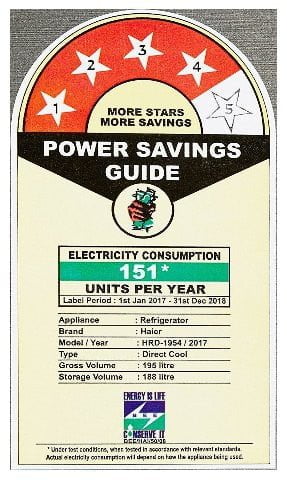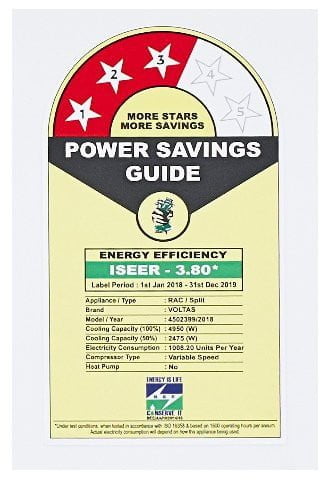BEE Star Ratings — The Complete Guide
Buying a product like an AC, refrigerator, washing machine, LED TV etc. is an important decision because they all cost money and we use them for many years. Therefore, it is important to find a perfect balance between features and cost to get the most value out of your money.
One important factor to consider when buying an electrical appliance is its BEE star rating.
BEE stand for Bureau of Energy Efficiency. BEE is basically a government agency which aims to help people buy energy efficient home appliances and save money on their electricity bill. They assign each model a star rating based on how much electricity it consumes. In simple terms, a higher star rating means less energy consumption and more savings on your electricity bill.
Even though the concept is very simple, it can still lead to confusion because of various factors listed below.
- BEE star ratings are calculated differently for different appliances. For example, BEE star ratings for refrigerators use different parameters compared to BEE star ratings for ACs. This is because the energy consumption for different types of appliances can vary greatly. Using the same scale for all of them is not practical or useful.
- BEE star ratings are updated from time to time. This way the government can ensure that the companies keep innovating and only manufacture appliances which consume less electricity. In other words, an AC with 5 star BEE rating in 2013 is equivalent to a 4 star BEE rating in 2015. Similarly, a 5 star BEE rating split AC in 2017 is same as a 3 star BEE rating split AC in 2018.
The second point is very important when choosing the next AC, refrigerator or any other appliance for your homes. Always make sure that you check the labeling period for that appliance.
Meaning and Importance of BEE Star Ratings
Generally, there are two types of costs associated with any product that you buy.
First is the upfront cost that you pay at the time of purchase to become its owner. This cost is the primary factor when a consumer is making a decision about buying something.
Second is the maintenance and usage cost. This is the money that you pay in one form or another when you use an appliance. For example, something you bought might require frequent repairs. Similarly, it may also consume a lot of power so you will ultimately pay for it in your electricity bill.
Most buyers simply pay attention to the upfront cost. This is mainly because it is marked clearly for different appliances and you just have to pay it once. The maintenance or usage cost on the other hand may sometimes go unnoticed. This means that you can sometime end up paying a lot more money for a product during its lifetime even if you got it for less money initially.
When we are talking about high energy consuming appliances like ACs, refrigerators and geysers, the electricity bill makes up a large portion of their usage costs.
To help common people and consumers, the Government of India set up Bureau of Energy Efficiency (BEE). on 1st March 2002 under the provisions of the Energy Conservation Act, 2001. In 2006, the government started labeling different appliances based on the amount of power consumed.
Since the BEE star labeling is now mandatory for a lot of appliances, buyers can easily choose a product which will keep their electricity bill down.
Higher BEE star rating means lower power consumption. Lower power consumption means lower electricity bill.
In general, hstorically appliances which consume less electricity use a smaller label to specify the power savings. These include ceiling fans, laptops, televisions and tubelights. As an example, the following image shows the label for a 1 star tubelight. Here, more stars mean that a tubelight will produce more light while consuming the same amount of electricity.

Starting from 2018, the label for LED lamps will look like the following image. In this update, the BEE label clearly highlights the lumens per Watt value which indicates how much light is produced for a single watt of power used in the LED light. Basically, a more efficient bulb will have higher lm/W value.

Some other appliances like refrigerators and geysers etc. also use these labels. Here is an image showing the label for a 4 star refrigerator from Haier. Just like the previous label, more stars mean more energy savings.

As you can see, the star ratings for this label are valid from 1st January 2017 to 31st December 2018. Refrigerator labels are easy to compare because they directly show the number of units consumed in a year.
BEE star rating labels use slightly different parameters when specifying the efficiency for an air conditioner (AC). Earlier they provided EER values on the label but starting from 2018 they have started providing ISEER values. You can learn more about these values and how they are calculated on the BEE star rating rating for Air Conditioners (ACs) page.
In this article, we will just show you a BEE star rating label with ISEER value to give you a rough idea of information available for you to read.

- If you don’t want to go into technical details but want to buy products which save maximum electricity, you can simply buy a product with more stars. In other words, 5 star BEE rating will save more electricity than a 4 star BEE rating. Similarly, 4 star BEE rating will save more electricity than a 3 star BEE rating. More stars means more electricity savings and less electricity bill.
- The Bureau of Energy Efficiency (BEE) keeps updating their parameters for star ratings. Therefore, a BEE 5 star rating in 2015 can be equal to a BEE 3 star rating in 2018. You should always check the label period of a BEE star rating before buying a product.
- Label for different types of appliances provide different information because they are used differently. The information provided on a label will depend on how the product is used, where it is used and for how many hours it is used. All these values are different for different appliances. Therefore, the labels are updated accordingly.
- For appliances like LED lights, the ratings are provided in lm/W or lumens per Watt. This simply means that an LED lamp with higher BEE star rating will produce more light for same amount of electricity consumed.
- For appliances like refrigerators, Bureau of Energy Efficiency simply provides the electricity consumption in a year. The labels for refrigerators are the easiest to understand because you directly get the amount of electricity being used.
- For an appliance like AC, BEE star rating label uses terms like EER (Energy Efficiency Ratio) and ISEER (Indian Seasonal Energy Efficiency Ratio) to specify the efficiency of the air conditioner. Higher EER or ISEER value means more stars. More stars mean more savings in electricity bill.
Among all the star label, the star rating labels for AC are probably most confusing due to terms like EER and ISEER. Therefore, we have written a special article dedicated to explain the BEE star ratings for air conditioners. You should definitely read it to get a complete understanding of BEE star ratings for air conditioners.
Rate this post —

